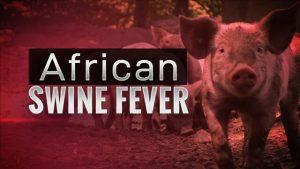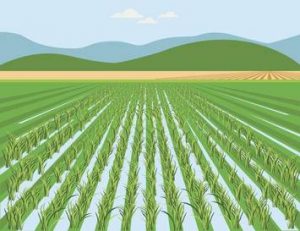Today Current Affairs: 3rd August 2022 for UPSC IAS exams, State PSC exams, SSC CGL, State SSC, RRB, Railways, Banking Exam & IBPS, etc
Table of Contents
New Zealand’s Bill On Tobacco Endgame:

To fulfil its plan to be smokefree by 2025, the New Zealand Parliament recently tabled the Smokefree Environments and Regulated Products (Smoked Tobacco) Amendment Bill.
- Emulating New Zealand, Malaysia is also considering a ban on smoking and the sale of all tobacco products, including e-cigarettes, to people born after 2007.
- The Tobacco Endgame refers to a policy approach that focuses on ending the Tobacco Epidemic, aiming at a ‘tobacco-free future’.
- The Bill seeks three Strategies to reduce Smoking significantly or ending it.
- If implemented, it will be the world-first legislation that will stop the next generation from ever being able to legally buy cigarettes.
Strategies Proposed:
- Drastically reducing nicotine content in tobacco so it is no longer addictive (known as “denicotinisation” or “very low nicotine cigarettes” (VLNC)).
- A 90% to 95% reduction in the number of shops that can sell tobacco.
- Making it illegal to sell tobacco to people born on or after 1 January 2009.
India Has Signed Bilateral Air Service Agreement With 116 Countries:

India has signed a bilateral air service agreement with 116 countries including neighbouring Bangladesh, Afghanistan, and Pakistan along with the US, UK, UAE etc
- Airline can operate to/from a point in India: Any designated foreign airline can operate to/from a point in India if it is designated as a point of call in the bilateral Air Services Agreement (ASA) signed between India and the country which has designated the airline.
- Free to mount scheduled operations: Indian designated carriers are free to mount scheduled operations to/from any international airport, including Kannur International Airport, under the ambit of bilateral ASAs concluded by India with foreign countries.
- Operating passenger services: Currently, due to a significant imbalance in the number of points of call in favour of foreign carriers, the Government of India is not granting any non-metro airport as a new point of call to any foreign carrier for the purpose of operating passenger services.
India’s Open Sky Policy:
- The National Civil Aviation Policy (2016) allows the government to enter into an ‘open sky’ air services agreement on a reciprocal basis with South Asian Association for Regional Cooperation (SAARC) nations as well as countries beyond a 5,000 km radius from New Delhi.
- It implies that nations within 5,000 kilometres of distance need to enter into a bilateral agreement and mutually determine the number of flights that their airlines can operate between the two countries.
- India has open sky agreements with Greece, Jamaica, Guyana, Finland, the USA, Japan, etc.
- The degree of “sky openness” depends on the freedoms of the air in the country granted to foreign airlines.
- There are 9 such freedoms according to the 1944 Convention on International Civil Aviation
African Swine Fever In India:

African Swine Fever has been confirmed for the first time, at a private pig farm in in Kerala, after more than 15 pigs on the farm had died due to the disease in the last ten days.
- It is a highly contagious and fatal animal disease that infects and leads to an acute form of hemorrhagic fever in domestic and wild pigs.
- Other manifestations of the disease include:
- High fever
- Depression
- Anorexia
- Loss of appetite
- Hemorrhages in the skin
- Vomiting and diarrhoea among others.
- It was first detected in Africa in the 1920s.
- Historically, outbreaks have been reported in Africa and parts of Europe, South America, and the Caribbean.
- However, since 2007, the disease has been reported in multiple countries across Africa, Asia and Europe, in both domestic and wild pigs.
- The mortality is close to 95% – 100% and since the fever has no cure, the only way to stop its spread is by culling the animals.
- ASF is not a threat to human beings since it only spreads from animals to other animals.
- ASF is a disease listed in the World Organisation for Animal Health (OIE)’s Terrestrial Animal Health Code.
AI In Agriculture:

According to NITI Aayog, AI has the potential to add $1 trillion to India’s economy by 2035. And, as per some experts and academicians, a significant amount of this would be in the agriculture sector.
Application of the AI in agriculture:
- Efficient and cost-effective resource and yield management in the agricultural sector.
- Enable Smart Agriculture: It refers to the usage of technologies like the Internet of Things, sensors, location systems, robots and artificial intelligence on your farm.
- AI, cloud computing, satellite imagery, and advanced analytics, in combination, can create an ecosystem for smart agriculture.
- Prediction analysis: Will ensure the highest possible yields based on the seasonal forecast models.
- Address supply-demand mismatch in real-time.
- For example, a supply-demand engine or predictor that can map supply and demand can reduce this issue significantly.
- Precision farming by determining whether pesticides and weedicides should be used by detecting and targeting weeds in the identified buffer zone.
- This can lead to higher yields and reduced use of pesticides and weedicides.
- Extension services: AI-based natural language translation facilitates the issuance and spread of Agri-advisories, weather forecasts, and early warnings for droughts in multiple vernacular languages.
AlphaFold:

DeepMind, a company owned by Google, announced this week that it had predicted the three-dimensional structures of more than 200 million proteins using AlphaFold.
- AlphaFold is an AI-based protein structure prediction tool.
- It used processes based on “training, learning, retraining and relearning” to predict the structures of the entire 214 million unique protein sequences deposited in the Universal Protein Resource (UniProt) database.
- The Indian community of structural biology needs to take advantage of the AlphaFold database and learn how to use the structures to design better vaccines and drugs.
Mechanism:
- The first step uses the available structures of 1,70,000 proteins in the Protein Data Bank (PDB) to train the computer model.
- Then, it uses the results of that training to learn the structural predictions of proteins not in the PDB.
- Then, it uses the high-accuracy predictions from the first step to retrain and relearn to gain higher accuracy of the earlier predictions.
- By using this method, AlphaFold has now predicted the structures of the entire 214 million unique protein sequences deposited in the Universal Protein Resource (UniProt) database.
Revamped Distribution Sector Scheme (RDSS):

RDSS is a reform-based and result-linked scheme to improve the financial sustainability and operational efficiencies of DISCOMs.
- This is done by financial assistance for the modernization of distribution infrastructure e.g., Smart Prepaid Meters. This is aimed to:
- Reduce AT&C loss by 12-15%
- Reduce financial deficit (average cost of supply-average revenue realised) of DISCOMs to Zero.
- Compulsory installation of smart meters (target of installing 250 million smart meters by 2025)
- Time: 2021-22 to 2025-26
- Nodal Agency: Under Ministry of Power (Rural electrification cooperation and Power finance corporation)
- Eligibility: All state-owned DISCOMs
- Other programs to be taken under it are: Part A (Prepaid Smart Meter, solarization of agriculture feeders, segregation of feeders, use of AI etc.) and Part B (Training and Capacity Building)
- Umbrella programme: It merges other existing power sector reforms schemes – Integrated Power Development Scheme, DDU Gram Jyoti Yojana, and Pradhan Mantri Sahaj Bijli Har Ghar Yojana (SAUBHAGYA)
Lumpy Skin Disease:

With the lumpy skin disease spreading fast among bovines in western and northern Rajasthan, cattle-rearers in the State are suffering heavy losses.
- The infection has spread to about 25,000 cattle in the last couple of months and resulted in the death of more than 1,200 animals.
- Lumpy skin disease (LSD) is an infectious disease in cattle caused by a virus of the family Poxviridae, also known as Neethling virus.
- The disease is characterized by fever, enlarged superficial lymph nodes and multiple nodules (measuring 2–5 centimetres (1–2 in) in diameter) on the skin and mucous membranes (including those of the respiratory and gastrointestinal tracts).
- Infected cattle also may develop edematous swelling in their limbs and exhibit lameness.
- The virus has important economic implications since affected animals tend to have permanent damage to their skin, lowering the commercial value of their hide.
- Additionally, the disease often results in chronic debility, reduced milk production, poor growth, infertility, abortion, and sometimes death.




